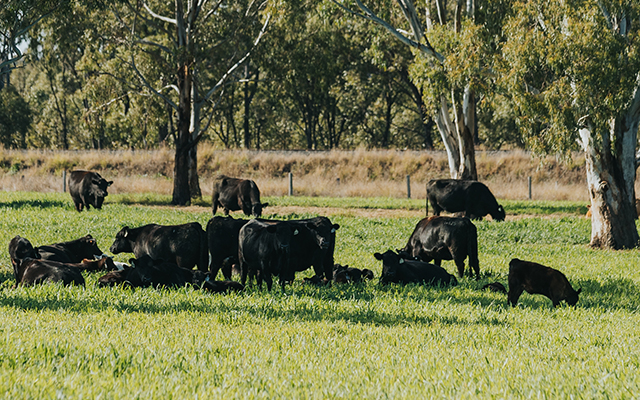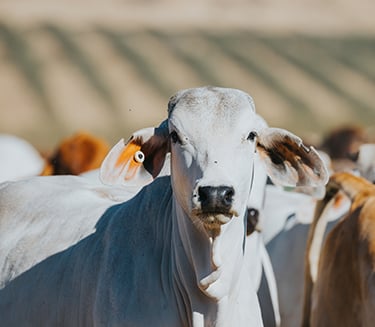The carbon cycle on farm
What is carbon? Carbon is a shape shifter and takes many forms.
It makes up life on earth. It’s stored in trees and soil. It’s also present in gases such as carbon dioxide and methane.
In agriculture, the carbon cycle describes the movement of carbon from the atmosphere, to plants and to animals. But how does it all happen?
Photosynthesis and carbon sequestration
Photosynthesis is an important part of the carbon cycle.
Carbon dioxide in the atmosphere is captured by plants through photosynthesis and turned into carbohydrates (sugars) for plant food. The grazing management of animals supports healthy plant communities on farms.
It’s the process by which plants remove CO2 from the atmosphere and deposit it into leaves, roots and stems, while releasing oxygen back into the atmosphere. This carbon is then converted into cellulose – an organic compound that’s present in grasses, shrubs and trees. Cows digest the cellulose, turning it into meat, milk and other products. Through digestion and respiration they then breath and burp out CO2 and CH4...also known as methane. This returns the carbon to the atmosphere and the cycle continues.
Photosynthesis also facilitates the sequestration of carbon (removal and storage) in soil, large shrubs and trees.
Some carbon is also deposited in the soil through the plant roots and through leaf litter on the surface. Farmers can manage their land in ways to keep more of that good carbon in the system. This helps to maintain healthier soils, increase water retention and plant growth, and support longer term sequestration.
The role of livestock
Cattle, sheep and goats graze the pasture, the carbohydrates break down, and the majority of the plant’s carbon fuels the animal to go about its day. Much of that carbon is deposited as weight gain – so the more healthy pasture and feed, the faster and more efficiently the cattle, sheep and goats can grow.
Some carbon is returned to the atmosphere as carbon dioxide through belching. Some is deposited as fecal matter to the soil, with some respired gases from the manure waste returning to the atmosphere as nitrous oxide and ammonia. If that was all there was to it – the carbon cycle would be in balance.
But what about methane?
Some of the carbon consumed is not turned into carbon dioxide or energy for the animal. Instead it is converted to methane through the process of digestion. Methane, like carbon dioxide, is a greenhouse gas. It is a much shorter-lived gas (approximately 12 years) but it is more potent at warming the atmosphere while it’s there.
The red meat industry is aware of the impact of methane emissions. Our industry faces challenges from increasing climate variability whilst acknowledging the contribution we make to greenhouse gas emissions.
As such, the Australian red meat industry is working towards this by reducing methane emissions through innovative technologies and practices, such as improved genetics, new types of livestock feeds and grazing and land management.
The industry is proud to be one of the first industries to set such an ambitious target, and has invested over $100 million into technology and research projects to support it.
Diet, genetics and new supplements are being explored to reduce the methane produced by cows, sheep and goats in the natural course of their digestion.
By focusing on environmental management - to produce more feed (grass) and healthier, livestock – the red meat industry can provide more milk, meat and fibre to feed our community from the resources we have. Another way to put this, is that farmers can increase their 'carbon efficiency’ (or emissions intensity) by maximizing product from the least amount resources.
Did you know?
- Dung beetles can recycle nutrients in pastures and help store carbon in the soil. Carbon sequestration from these ecosystem engineers could be equivalent to carbon sequestration from 400,000 hectares of eucalypt plantation (source).
- Grazing of pastures by livestock helps remove GHG from the air by stimulating more plant growth, turning it into carbon in plants and soil (source).






